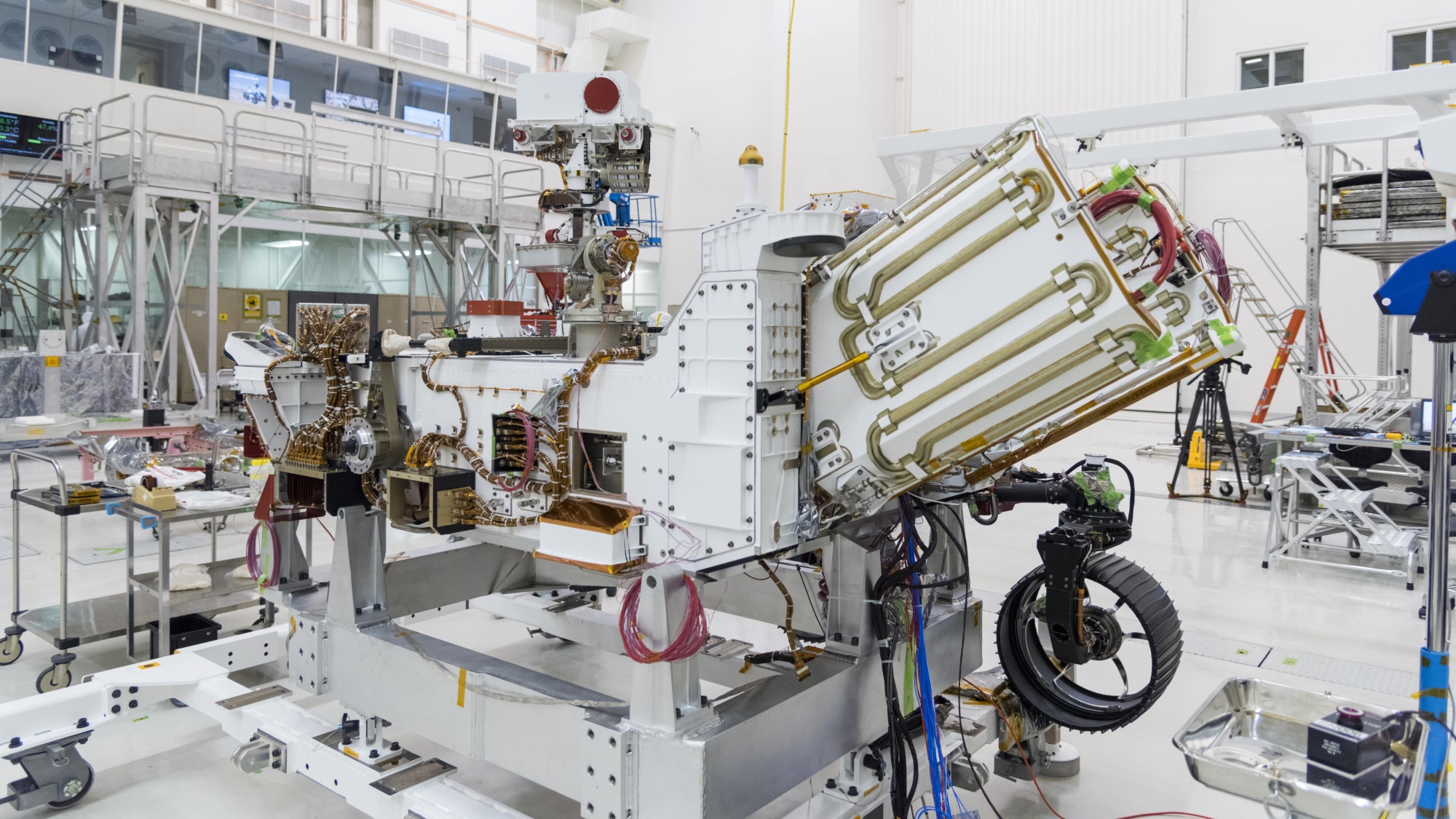Move Over, Energizer Bunny! NASA's Mars 2020 Rover Just Got Its Nuclear Battery
NASA's next spacecraft on Mars is getting a nuclear battery to do science on the Red Planet.
The Mars 2020 rover will soon be fueled using a multi-mission radioisotope thermoelectric generator, which is essentially a battery to keep it warm and productive on its mission in search of signs of habitability on Mars.
Mars 2020 isn't alone in using nuclear power, as a host of other NASA spacecraft — 27 in all — have also used nuclear power. Some examples include the Voyager missions in interstellar space, the New Horizons mission that went past Pluto, and Curiosity — Mars 2020's predecessor rover on the Red Planet.
Related: NASA's Mars Rover 2020 Mission in Pictures (Gallery)
Production of plutonium-238 — a radioactive isotope of plutonium that will fuel the Mars 2020 rover — was stopped for awhile in the U.S. in the late 1980s, then restarted in 2011 in a joint effort between NASA and the Department of Energy. The isotope is the main source of energy for spacecraft that cannot rely on solar power, usually because the craft is too far from the sun, or on a world where the sunlight is too weak to generate enough power.
A 2017 report from the Government Accountability Office said that there was enough plutonium-238 in stockpiles at that time for space missions planned through the 2020s. There were, however, long-term issues with plutonium-238 production, including reactor availability, technical matters with chemical processing, and workforce hiring and training. In 2018, citing progress with stockpile management, NASA said plutonium would be available for its next Discovery-class mission, which will announce Step 1 selections in 2020 and the final selections in 2021.
The nuclear battery on Mars 2020 will produce about 110 watts of electrical power through the natural decay of plutonium-238 into uranium-234. The energy will then be converted to electricity using thermocouples (devices that generate voltage). NASA touted the nuclear fueling as a major milestone that indicates that the rover is well on its way to launching on time in July 2020, since the process of loading this fuel source is carefully timed to the launch date.
Breaking space news, the latest updates on rocket launches, skywatching events and more!
Related: Nuclear Generators Power NASA Deep Space Probes (Infographic)
The rover's interior is almost finished, and is only awaiting a caching assembly in which the rover will store important samples for a future sample-return mission. The exterior is still under construction; the robotic arm and high-gain antenna are among the visible changes to the outside.
"We are advancing on all fronts — including completion of the cruise stage that will guide us to Mars and the sky-crane-descent landing system that will gently lower us to the surface," John McNamee, project manager at NASA's Jet Propulsion Laboratory, said in a statement. "And the rover is not only looking more and more like a rover each day, it's acting like one."
The mission is targeted to land at Jezero Crater on Feb. 18, 2021; NASA says that the rover is the first of it's kind that can retarget its point of touchdown on the fly while landing. If the technology works, it could help with crewed missions to the Red Planet in a future decade.
- 4 Mars Missions Are One Year Away from Launching to the Red Planet in July 2020
- NASA's 2020 Mars Rover Gets Its 1st Wheels, and a Mast, Too (Ahoy!)
- You Can Watch NASA's Build Its Mars 2020 Rover Live Online
Follow Elizabeth Howell on Twitter @howellspace. Follow us on Twitter @Spacedotcom and on Facebook.

Elizabeth Howell (she/her), Ph.D., was a staff writer in the spaceflight channel between 2022 and 2024 specializing in Canadian space news. She was contributing writer for Space.com for 10 years from 2012 to 2024. Elizabeth's reporting includes multiple exclusives with the White House, leading world coverage about a lost-and-found space tomato on the International Space Station, witnessing five human spaceflight launches on two continents, flying parabolic, working inside a spacesuit, and participating in a simulated Mars mission. Her latest book, "Why Am I Taller?" (ECW Press, 2022) is co-written with astronaut Dave Williams.


